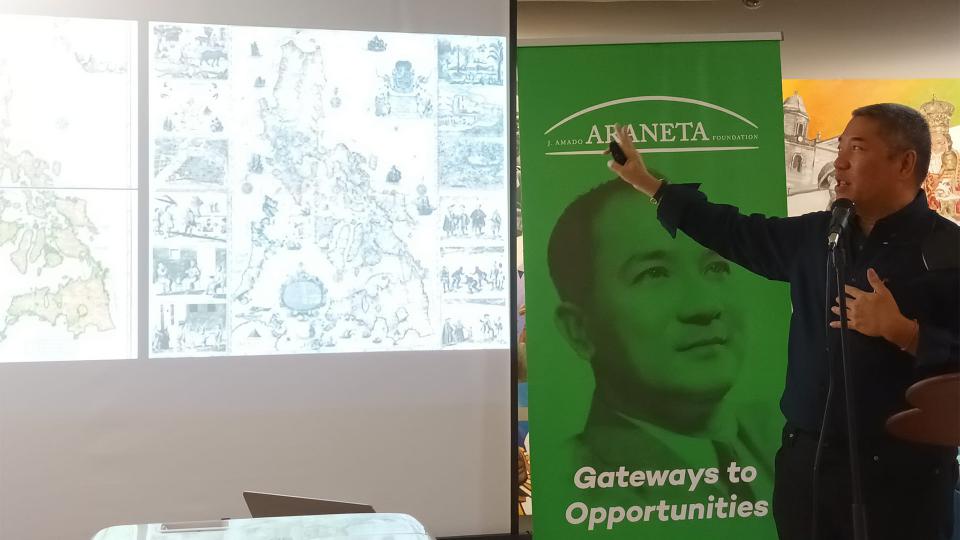Charting the path of the Philippines through historical maps
Renowned Filipino historian Ambeth Ocampo called on the public to realize the importance of historical maps in Philippine society, calling them a ‘representation of reality’ amid an era of what he calls ‘historical revisionism.’
During his talk titled ‘All Mapped Out!’ in Gateway Gallery’s Map to Freedom exhibit on July 9, Ocampo emphasized the significance of the Murillo Velarde map in shaping the culture of Filipinos.
“When you look at the maps, you look at the shape of the Philippines, just remember that maps are also a sign of our national identity,” Ocampo said.
He explained how maps show us how the modern Philippines was formed from a colonial experience and how they can be used in charting the future of the country. “We see how from being just drawings of islands, it became a people, a free and independent people that are bound by common culture, language, and history,” Ocampo said.
Ocampo added that maps are living proof of Filipinos’ past, what it is today, and what it will be in the future. “Maps are just the start of studying where we came from and once we know where we come from, we know what we are and where we are going,” he said.
Ocampo’s talk was part of Gateway Gallery’s Map to Freedom exhibit which was mounted in celebration of the Philippines’ 124 years of independence. In partnership with the Philippine Map Collectors Society (PHIMCOS), the Map to Freedom exhibit showcased two cartography exhibits: ‘Putting the Philippines on the Map’ and ‘‘Mapping Our Liberty’ which both present the cartographic visualization of the Philippines from the 1500s to the present time.
The Map to Freedom exhibit runs from June 12 to July 31 at the Gateway Gallery, the art museum of Araneta City. Gateway Gallery is open daily from 10 am to 6 pm as a free admission museum.

